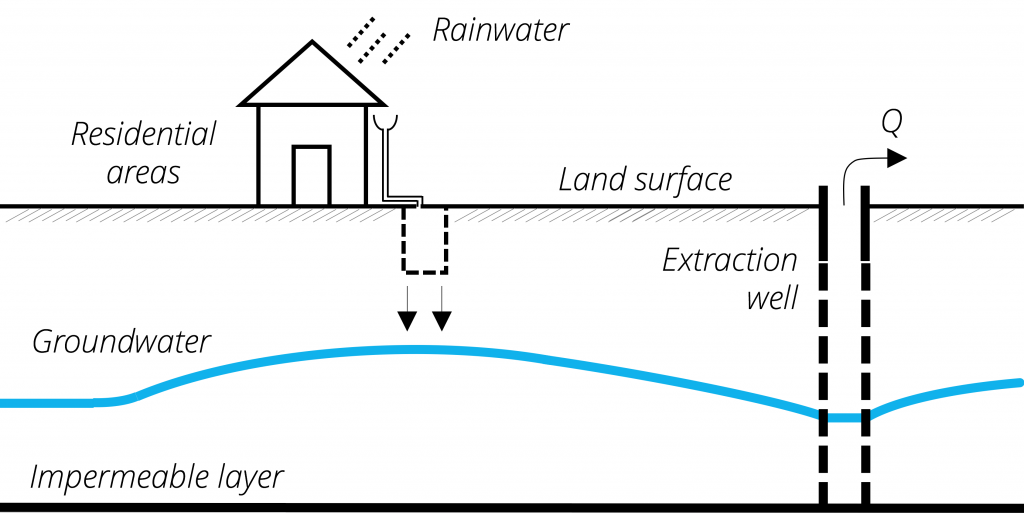
Rooftop rainwater harvesting is being increasingly used in urban areas to collect precipitation water. Uses are manifold and include surface storage in tanks, usage for irrigation and groundwater recharge. The collected rainwater can be reached thorugh trenches, reverse drainage or any other methods with small area requirements. As urban areas are characterized by sealed surfaces, harvesting and recharge can help to sustain groundwater levels. They also help to decrease storm water runoff with its potential theats of pollutant accumulation.
| Typical system capacity scale | Family to Village (10²-10³ m³/a) |
| Geology | Unconfined aquifers. |
| Topography | Urban areas. Sealed surfaces. |
| Soils | Sandy soils. |
| Water source | Rain water. |
| Pre-treatment | Depending on local requirements, e.g. greened roofs. |
| MAR main objective | Strategic water storage. Mitigation of effects of urbanization. |
| Cost | Moderate. |
Advantages and disadvantages of the system (adapted from IGRAC, 2007):
Advantages
- Use of already exisistng structures (rooftops, roads).
- Storage of rainevents, less flooding.
- Reflief of WWTP in case of mixed water collection.
Limitations
- Water quality might be problematic (road pollution).
Case studies
References
- IGRAC. (2007). Artificial Recharge of Groundwater in the World.
- DEMEAU. (2014). Characterization of European managed aquifer recharge (MAR) sites – Analysis.
